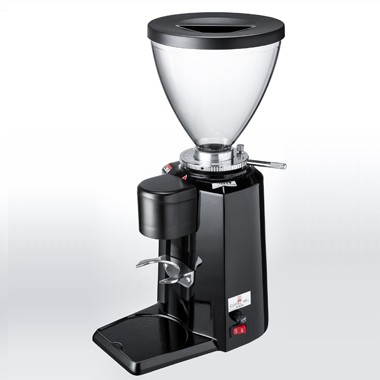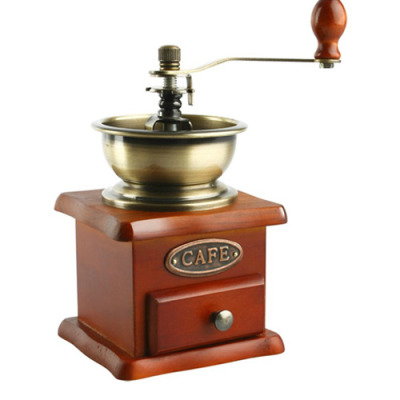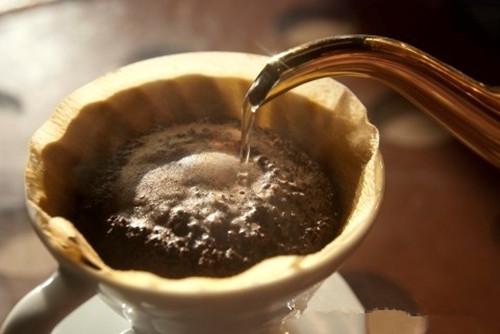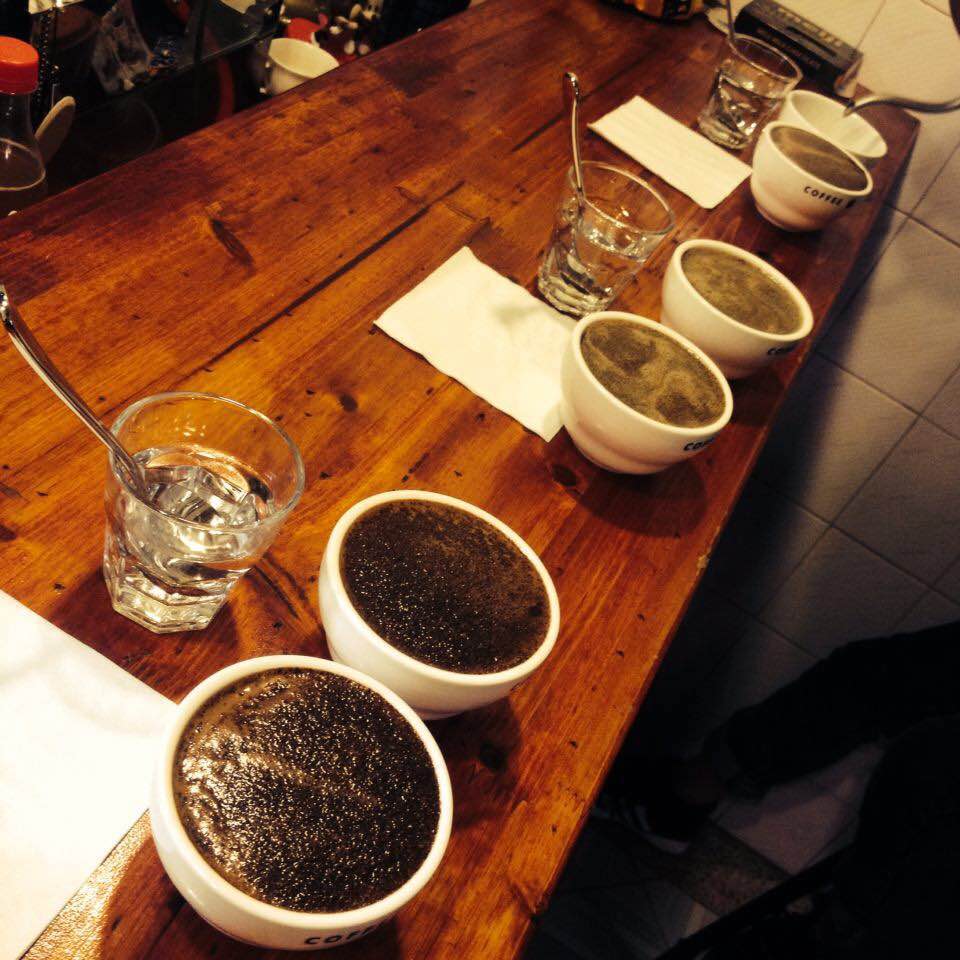The quality of bean grinder is an important factor in determining the quality of coffee-the difference between manual and electric.
No matter what kind of extraction method we use, what kind of coffee beans and equipment we use to make a cup of coffee, the grinding quality plays a key role from beginning to end. Many novice beginners pay great attention to how to choose equipment and equipment, pay attention to brewing methods, but often ignore the importance of the influence of bean grinder on production.
Little do you realize that a good cup of coffee that can really be called a high-quality coffee should be indispensable for making "beans, technology, grinding and machine".
Rigidity conditions for determining milling quality (1): uniformity
The working principle of the coffee grinder is that the inner cutter head of the grinder is driven by an electric motor to rotate at a high speed, and the coffee beans entering the inner and outer knife through the bean warehouse are divided into fine particles and become the coffee powder we need to brew.
The fineness of grinding is determined by the distance between the upper and lower cutterheads before grinding.
The farther the knife distance is, the thicker the grinding powder is, and the closer the knife distance is, the finer the grinding powder is. generally, the dial or knob is used to adjust the thickness.
The actual purpose of what players often say that "different utensils need different powder thickness" is to make the thickness of coffee powder correspond to the extraction principle of a certain kind of apparatus, and adjust it according to their own techniques, so as to reduce the possibility of excessive or insufficient extraction and achieve a relatively better effect.
When you find the right powder size, consider the next important factor: uniformity.
The grinding process of each cup of coffee usually takes a few seconds to more than ten seconds. According to the fineness of the grinding powder required by different brewing methods, the grinding machine grinds each coffee bean into a coffee powder with a diameter of about 3500-3500 and a diameter of about 0.05-0.7mm.
When extracting such a large number of coffee particles, the effect of uniformity on the product is extremely critical.
What is extraction? The definition of extraction itself refers to a process of substance exchange between coffee powder and water.
Put aside what we often say, "if you don't grind evenly, you can't make coffee well." from a more macro point of view.
The taste of a cup of coffee is originally a combination of thousands of coffee granule extracts.
When the fluctuation value of grinding thickness is large, most of the particles can not reach the uniform degree we want.
As a result, under the same extraction conditions, the coarser coffee particles are more likely to be underextracted, while the finer particles are overextracted in advance.
Therefore, the larger the grinding span of coffee powder is, the more turbid and irritating smell can be tasted.
On the other hand, coffee powder with basically the same size and similar shape is used for extraction.
The taste becomes brighter and stronger, and the performance of flavor characteristics is clearer and consistent.
In Italian concentrated extraction, whether the degree of grinding is uniform or not not only affects the taste of the product, but also determines the success of Italian coffee.
If Italian production is carried out with a bean grinder with poor uniformity, it is easy to make the powder particles distributed in a certain part (or possibly more than one part) of Coffee pressed powder thicker, and the high-pressure water flow will quickly squeeze out of these thinner "vulnerabilities" of pressed powder, creating one or more channel effects so that the local coffee powder is overextracted while the surrounding part is underextracted. In this state of Italian extraction, it will only be a cup of bitter water.
When the grinding quality of a bean grinder is seriously lower than the uniformity required for making Italian style, no matter how fastidious the cloth powder is and no matter how good the powder pressing skill is, it is difficult to successfully make a qualified Italian style. Because the technology of powder distribution and powder pressing itself is based on the premise that the powder is uniform enough.
Therefore, if you want to get a better flavor in the cup,
A well-powdered bean grinder will bring about far more improvement than you can imagine.
Rigidity conditions for determining milling quality (2): fine powder content
Fine powder refers to coffee powder with very fine particles, also known as flour and ultra-fine powder.
Fine powder will inevitably exist in the grinding process.
When the proportion of fine powder exceeds a certain degree, it will aggravate the bitterness and miscellaneous taste, and have an adverse effect on the product.
Too much fine powder has a particularly serious effect on the taste of the product when using the French kettle.
A large amount of ultra-fine powder will pass through the filter, making the coffee drink muddy, as if it were imported with soot and wood dregs.
We usually choose the coffee powder with coarser grinding fineness, or directly upgrade the higher density filter screen for pressure production, in order to reduce the production of fine powder.
When it comes to the production of espresso, when the flow rate of Italian concentrate is relatively slow, and the oil is rich, the fine powder will not sink directly into the coffee liquid, but slowly spread and float on the surface of the oil. to form a beautiful "tiger pattern spot"
In other words, the tiger pattern is actually a very fine powder that passes through the filter hole of the powder bowl.
This is why it is easier to produce tiger spots by gently pressing pressed powder or using a bean grinder with a conical knife structure.
However, no matter whether the tiger pattern exists or not, it can not represent the quality of a cup of Italian production.
Some players exaggerate the influence of tiger pattern, and some even think that "tiger pattern is a good performance of Italian extraction."
I can't agree with this.
Too much fine powder will cause the dead point of pressed powder which can not be extracted, form the channel effect, and seriously affect the success rate of Italian extraction.
So, does fine powder do more harm than good to the taste of coffee?
In an early article, "also talking about the sieving method of single Coffee Powder", comparing the screening of fine powder with the two cups of coffee that are normally ground, the production level after sieving powder is weak, the taste is weakened, and the connection carrier between flavors is lost. it also greatly reduces the flavor structure.
The coffee which has completely lost the fine powder can be said to be empty and boring.
Therefore, the existence of a small amount of ultra-fine powder is inevitable and necessary.
An excellent bean grinder can control the amount of fine powder in a small range and reduce its adverse effects.
Other factors affecting the quality of grinding (1): grinding heat
During the working process of the bean grinder, the cutter head produces a certain amount of heat with the high-speed grinding.
Coffee powder will volatilize the aromatic substances ahead of time due to a large amount of heat, resulting in the loss of part of the flavor and aroma.
The heating problem of grinding is mainly caused by the heating phenomenon of Italian bean mill, because the grinding is fine and the friction between the grinding plate and coffee beans is strong, in the case of a small amount of domestic grinding, the effect of heating on the quality of flour is almost negligible. On the other hand, when it is used as a commercial place for business or when rapid continuous grinding is carried out (such as during the period of adjusting the scale), the heating of grinding is destructive to the flavor of coffee.
The calorific value of the cutter head depends on many factors, such as the size of the grinding plate, the material used, the structure of the knife, the fineness of grinding, the speed of the motor, the hardness and texture of coffee beans and so on.
Almost all high-end Italian bean grinders are equipped with heat dissipation windows, cooling fans, or higher torque and low speed motor to drive the cutter head, in order to reduce the number of cutterheads.
The simplest and most effective solution to eliminate grinding heat is to upgrade your bean mill.
Other factors affecting milling quality (2): generation of static electricity
Static electricity is a common phenomenon in the grinding process of coffee powder, and there are many reasons for it.
Compared with the first three, the effect of static electricity on the product is negligible.
But many people still know very little about it. Wolf simply explains it here.
Static electricity usually occurs from the following factors:
The finer the grinding and the faster the grinding, the stronger the static electricity produced.
The internal material is plastic, and the lower powder mouth does not use a bean grinder designed to reduce static electricity, which produces stronger static electricity.
The coffee beans with rich oil and deep roasting degree are ground to produce stronger static electricity.
Static electricity will have some indirect effects on the quality of milled products.
For example:
The powder outlet of the bean grinder accumulates residual powder and blocking powder.
When making hand punching or Italian concentration, the powder is agglomerated, which makes the cloth powder uneven.
Part of the silver skin and ultra-fine powder produced by adsorption and grinding
Timing data affecting the type of electronically controlled quantitative machine
Properly increasing the humidity of the room is also a way to improve the generation of static electricity.
The attention and effort to each production detail is for a better cup of coffee.


In addition, many people who are new to coffee are more confused about whether to choose a hand grinder or an electric grinder, but there is no absolute good or bad, and the difference between the two needs to be distinguished according to four principles of grinding.
1. The uniformity of particles and uneven particles will lead to uneven extraction.
At this point, manual is not as good as electric, and uneven manual force will result in insufficient particle uniformity.
two。 Temperature, high temperature will cause the aroma of coffee powder to dissipate.
No matter what kind of bean grinder is used to grind beans, heat will be generated during use, which will volatilize the aroma of coffee powder. For a small amount (10-20g) of coffee beans, the heat generated by hand grinding is negligible. If it is a 1kg bean, you can imagine the heat generated by hand grinding, while the heat generated by electric grinding is more balanced and dissipates heat faster than manual equipment.
3: the thickness of the particles
Different extraction methods have to correspond to different particle sizes in order to make the best coffee. Turkish style, for example, needs the finest grinding because it is unfiltered and brewed directly in water. But the filter pressure requires coarse particles.
4: grinding capacity
Manual is not suitable for commercial use, but it is also very interesting to use manual in your spare time.
Important Notice :
前街咖啡 FrontStreet Coffee has moved to new addredd:
FrontStreet Coffee Address: 315,Donghua East Road,GuangZhou
Tel:020 38364473
- Prev

Hand-brewed coffee-experience the most primitive and unique flavor of coffee
The coffee extracted by hand method is called hand-brewed coffee ((Hand Drip Coffee). Hand flushing can bring the personality and characteristics of coffee beans to the extreme, so a single coffee bean is often chosen. Hand-made coffee was invented by the French, but it was the Japanese who carried it forward. Some people think that hand-brewed coffee is the healthiest way to drink coffee, combining all the oils and unhealthy ingredients of coffee
- Next

Coffee cup test-an introduction to roasting coffee beans
Coffee Cupping, which is translated into Chinese for coffee cup test, cup taste or cup evaluation, is a very magical and simple method of coffee sensory evaluation. The quality of coffee is judged by the sense of taste, which is called coffee cup test. The person who evaluates it is called a coffee quality appraiser. Similar to wine tasting, when testing a cup, make the coffee flow back and forth in your mouth and make full use of your sense of taste and smell to feel the coffee.
Related
- What is the meaning of lactic acid fermentation with coffee bean treatment?
- How to judge the state of foam by sound?
- How does the latte pull out the unicorn pattern? Come to get for a little trick to improve the flower pull!
- Will flower pulling affect the taste of the latte?
- Do you know the history of coffee?
- The difference between honey treatment and sun washing what is raisin honey treatment?
- What kind of milk can a novice use to make coffee foam to keep the foam longer? The correct method and skills of milking tutorial sharing
- Why do washed coffee beans taste sour? Flavor characteristics of washed Coffee
- Introduction to the skill of how to practice the size and height of water injection around the circle of hand-brewed coffee
- How do beginners practice coffee flower drawing from scratch?

